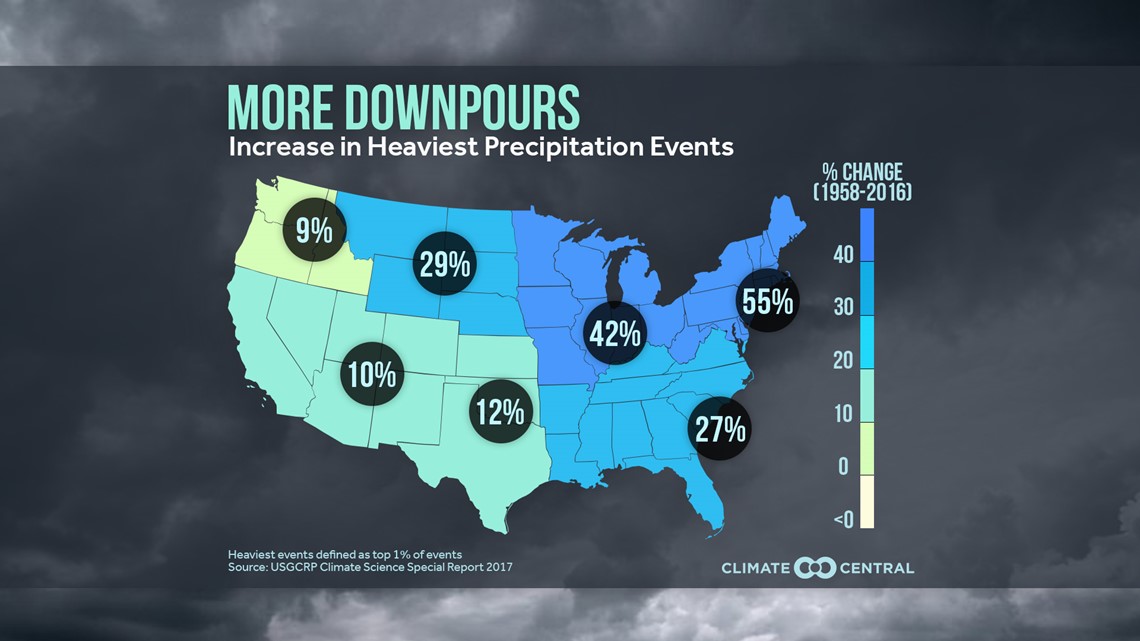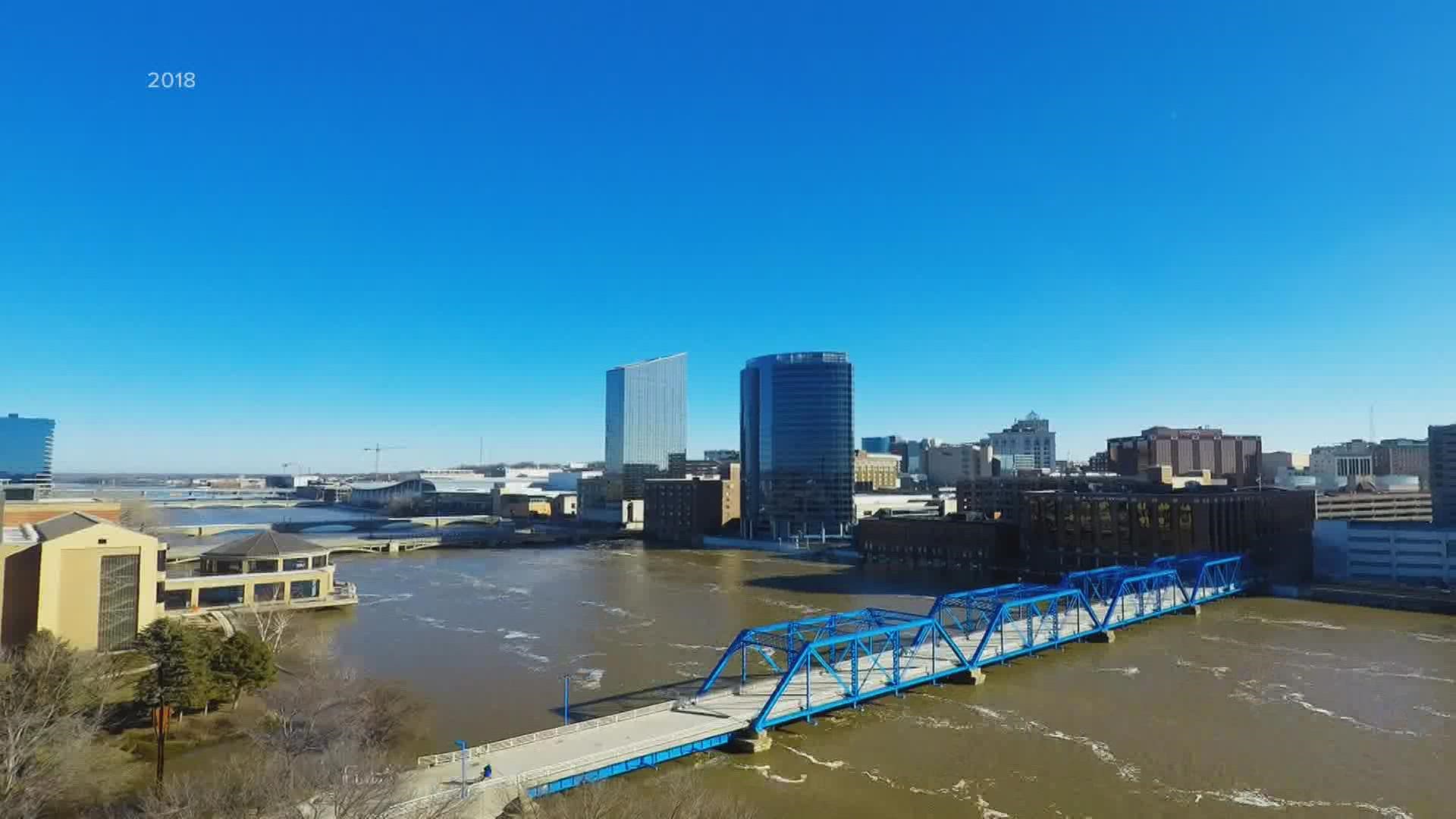GRAND RAPIDS, Mich. — We assume that infrastructure like buildings, roads and bridges are built to withstand our climate. But what happens when our climate is changing?
State Climatologist Jeffrey Andresen stated that arguably the strongest climatological trend in the Great Lakes region is an increase in precipitation annually. Specifically, extreme rain is becoming more common, meaning a lot of water comes down in a short period of time. Andresen said that we could see the worst of these impacts in nearly 30 years.


This poses a huge problem to infrastructure because when designed it is given a number to calculate how much water it can withstand.
"That would have been the number used to legally design infrastructure in the 50s and 60s, 70s, even in the 80s. But now because of a 10% to 15% wetter climate, more annual precipitation, and increasingly extreme events, that number is roughly 20% too low," explain Andresen.
That means that infrastructure built before the 80s is not built to withstand our current climate, let alone the projected future climate impacts.


This brings us to a critical point in time where climate change, infrastructure maintenance, money, and time all collide. The question then becomes, where does the city of Grand Rapids stand when it comes to preparing for climate change?
I spoke with Executive director Bill Wood, from the West Michigan Environmental Action Council, to see where we stand.
Bill stated, "The city has done a really good on with regard to storm water infrastructure since the 2013 flood."
That was a situation where the Grand River crested nearly 3 feet above flood stage, causing nearly 15 million dollars of infrastructure repair in West Michigan.
"Now, the city itself has gotten a lot more protection as far as the downtown area goes. One of the things that I think we are moving towards, not a moment too soon, is getting more of this green infrastructure out into neighborhoods, out into privately owned areas like businesses and residences, and also educating people about why that's important."
There are things you can do today in order to mitigate these problems and help save you money in the future.
Add a rain barrel to the outside of your home. This collects roof runoff, reduces the amount of storm water that makes it into our retention basin, and reduces pollution. It's also a great way to conserve water and it's free water for use in your landscape.
Create more green spaces and leave them planted year-round. Even if they look dead, the roots are still absorbing water.
Clean your storm drains to help properly filter your water
These sustainable actions are things you can do today that will help us live a better future.
►Make it easy to keep up to date with more stories like this. Download the 13 ON YOUR SIDE app now.
Have a news tip? Email news@13onyourside.com, visit our Facebook page or Twitter. Subscribe to our YouTube channel.

